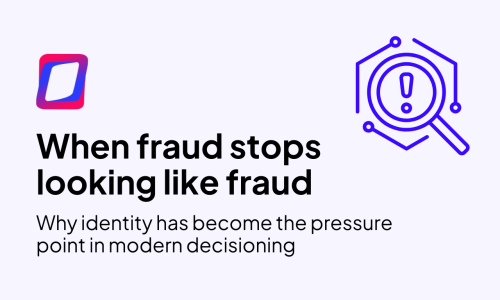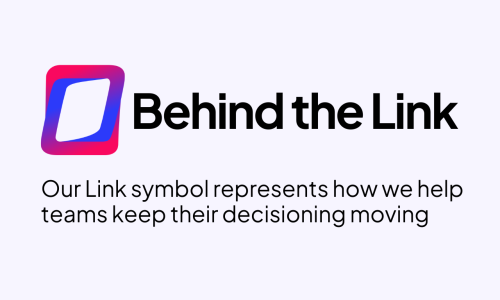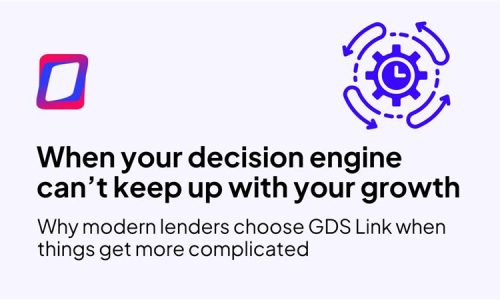What’s the Right Approach to Credit Risk Modeling?
Introduction to Credit Risk Modeling
Risk modeling is an essential cornerstone of the lending process. There are a few different ways to generate a risk model to help guide your loan process and help prevent losses for unpaid loans. Every credit risk model will have its own strengths and weaknesses. Therefore, developing a suitable model to match your lending program style is critical.
Credit risk models must be followed carefully. When implemented correctly, they can prevent many issues with loan default and damage to an individual’s financial credit. You have a responsibility to help your customers stay within their financial means. As a financial institution, you want to be sure you are funding loans that can be serviced correctly and without issue.
Over the past two years, many financial lending institutions have been operating in the dark or taking a wait-and-see approach to lending, especially for non-prime borrowers. This is due to various factors that have upstaged the economy, sending it on a rollercoaster ride of ups and downs over the past 24 months. With concerns surrounding COVID-19, supply chain disruptions, increasing inflation rates, war excursions, and other elements, it has been difficult to forecast long-term patterns and case-by-case credit borrowers precisely.
To the surprise of many experts and credit risk modeling analysts, through 2021, consumer credit performance remained high across several industries, including auto, credit card, personal, and mortgages. This was particularly exemplified in credit card loans, as the market witnessed a high rate of new account growth in Q3 2021 with a record 20.1 million originations, 9 million of which were to non-prime consumers.
While this strong credit performance is encouraging, financial institutions need to remain sensitive to their risk models as miscalculations and market drops could loom.
Read on for an introduction tocredit risk modeling.
What is Credit Risk Modeling?
A credit risk model is a tool used to score the probability of an individual or business being able to repay their loan. In theory, credit risk models are analytics performing at their best. Financial institutions and other credit lending companies use a well-optimized model to prevent losses and defaults and help increase returns on loans through the collection of principal and interest payments.
These systems rank applicants based on their creditworthiness and help determine the interest rates and payment structures each applicant can offer. Many risk models offer different interest rates and loan payment structures for each product type that a financial institution provides. This risk model system helps make credit available to customers without prejudice or bias.
Credit risk can be defined in many ways, but the most common reason an application might be deemed a credit risk is the customer’s financial history. Customers with many debts or poor credit are often turned away by lenders. Creditworthiness is based on prior loan management and prior ability to pay owed debts. With a credit risk model in place, high-risk loans are identified and are either approved with limitations or denied altogether.
When a credit risk model is used correctly, it will accurately project a probability of default and help protect the financial exposure of banks and other companies. This protects the lending institution from taking an expected loss and helps prevent customers from taking on debts they cannot afford. These systems reward customers with top-tier credit by offering them low-interest rates and more flexible repayment terms.
Why is Credit Risk Modeling Important to Financial Institutions?
Credit risk modeling is critical for financial institutions to prevent issues with bias, oversights, and losses that could cause the bank or credit union to be forced to close or experience negative stress. While offering reduced terms and higher interest rates to customers with damaged credit might seem unfair, there is a significant risk in offering a loan to someone with poor credit or an income that will not support this added debt. Consumers with damaged credit may argue that they can pay the loan off, but prior credit history will always be the best indicator of someone’s probability of repaying a loan.
When used correctly, a credit risk model will ensure that loans are only given to those with the income and credit history to pay them back on time and without issues related to late payment or non-payment.
As mentioned, the past two years have thrown multiple curveballs at financial lenders. As both the U.S. and the global economy remain in an environment of unpredictability, it is with great pressure that financial institutions should invest heavily in credit risk modeling that can adequately handle this unique environment. Many industry experts detail how banks, credit unions, and other specialty lenders have models ill-designed for today’s market due to issues like:
- A limited history and access to high-quality data
- Recent misconceptions of inflation not being a driver of financial losses
- Slow time to value for models
- A lack of agile model deployment
The 2008 financial crisis taught banks and credit unions a hard lesson about overextending credit to customers. High-risk lending was given the green light far too often. The change in many people’s fortunes led to a downturn in the economy, lost jobs, and increased costs for daily expenses. These forces conspired to generate a domino of losses. Banks and credit unions that failed may not have realized that they were offering loans to people who could not afford them. Risk-based lending is the only way to help protect a financial institution from a miniature version of this crisis.
Therefore, financial institutions need to follow the trending path of fintechs, which adopt cloud-based credit risk modeling that utilizes artificial intelligence and machine learning to anticipate credit risks better. Through this advanced technology, financial institutions can experience improved model process automation. This includes enhanced decision-making processes, data management, quality control of that data, the decision, and the associated documentation. This is all to say that financial lenders are now equipped with the right information sets to make better data-driven decisions on a shorter timeline.
What Are the Factors That are Included in Credit Risk Modeling?
Credit risk modeling analyzes a few key items when assessing loan applications. Using credit risk modeling ensures uniform and equitable decision-making regardless of the applicant.
- Risk of Default: Has the borrower defaulted on a loan before, or do they have a history of non-payment or late payment? Do they have damaged credit related to other repayment struggles? Personal financial history is the strongest indicator of whether or not a borrower will adhere to their loan agreement.
- Concentration of Risk: Does the borrower work in a seasonal industry likely to experience layoffs and staff cuts? Are they self-employed and struggling to stay profitable? Do they have many other loans they are paying on already? Borrowers with inconsistent income our outsized financial responsibilities are at high risk of late payment, non-payment, and default.
- Location or Country Risk: Is the borrower a citizen of another country and only temporarily in the country where they are requesting the loan? Is this person someone who has no ties to the country they are asking for a loan from? It’s very difficult to recoup funds internationally, and if a borrower cannot repay a large loan, they may leave the country to avoid consequences.
These more significant considerations are examined to determine the probability of default and the degree of risk exposure. Each applicant’s credit file and other financial factors, or lack thereof, will tell a clear story of the risk inherent in lending to each applicant. While credit history can be very informative, you must look at the entire personal portfolio to gain a holistic lending picture to make an informed decision and deliver a score rating.
How to Handle Credit Risk Modeling Correctly
Financial institutions need to have a credit risk model in place that will be consistent and fair. This risk model must be applied to each borrower’s application, and exceptions cannot be made without accepting an increased probability of default. Faith in the fairness of the lending system is necessary to encourage people to apply for loans and work with your lending program whenever they need to borrow money.
Your risk model will need to adjust to meet the changing times, and you need to be prepared to adjust rates up and down as needed or even create new lending policies altogether. If you’re trying to develop the perfect credit risk model, we can help.
We offer all the necessary support for your credit risk modeling process and can help you develop a fair, balanced, and risk-focused risk modeling process. Contact us today to improve your credit risk model.
Related Risk Management Articles
- Benefits & Risks of Mobile Banking
- Risk Management & Data Analytics for Small Businesses
- Top 4 Major Challenges of Credit Risk Management in Banks
- Credit Risk Scorecard Model Development, Monitoring & Reporting
- Risk Analytics Foundational to Broad Financial Services Innovation
- What Are The Different Types of Credit Risk
- Why Credit Risk Management is Important for Credit Unions
- How to Build a Credit Risk Management Framework
Recent articles

When Fraud Stops Looking Like Fraud
Read article
Behind the Link
Read article





